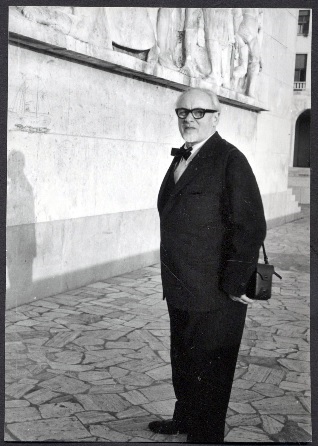
| Roles | Competed in Olympic Games |
|---|---|
| Sex | Male |
| Full name | Raffaello•Fagnoni |
| Used name | Raffaello•Fagnoni |
| Born | 29 April 1901 in Firenze, Firenze (ITA) |
| Died | 4 May 1966 (aged 65 years 5 days) in Firenze, Firenze (ITA) |
| NOC |  Italy Italy |
Raffaello Fagnoni belonged to the so-called Tuscan school and was involved in the construction of stadiums in Torino and Lucca. He was one of the leading proponents for the implementation of architecture as a university discipline. After studying in Roma, he returned to his hometown and founded the local section of the fascist architects’ association. From 1931 Fagnoni was a lecturer, and from 1937 a professor at the Faculty of Architecture in Florence, serving as its president from 1956-66. After World War II, he was involved in the reconstruction of numerous public and residential buildings and devoted himself above all to sacral architecture.
In 1931 Fagnoni began his 20-year collaboration with Enrico Bianchini. In 1932, he was involved in the construction of the “Stadio Benito Mussolini” in Torino, his contribution to the art competitions in 1936 together with Dagoberto Ortensi and Bianchini. According to the original plan, the stadium, inaugurated in 1933, had a capacity of 65,000 seats and was the largest in Italy at the time. It was shaped as a large ellipsoidal ring whose circumference was about 640 m. For the 2006 Winter Olympics the stadium was renovated and extended, now called “Stadio Olimpico Torino”.
| Games | Discipline (Sport) / Event | NOC / Team | Pos | Medal | As | |
|---|---|---|---|---|---|---|
| 1936 Summer Olympics | Art Competitions |  ITA ITA |
Raffaello Fagnoni | |||
| Architecture, Further Entries, Open (Olympic) | Italy |